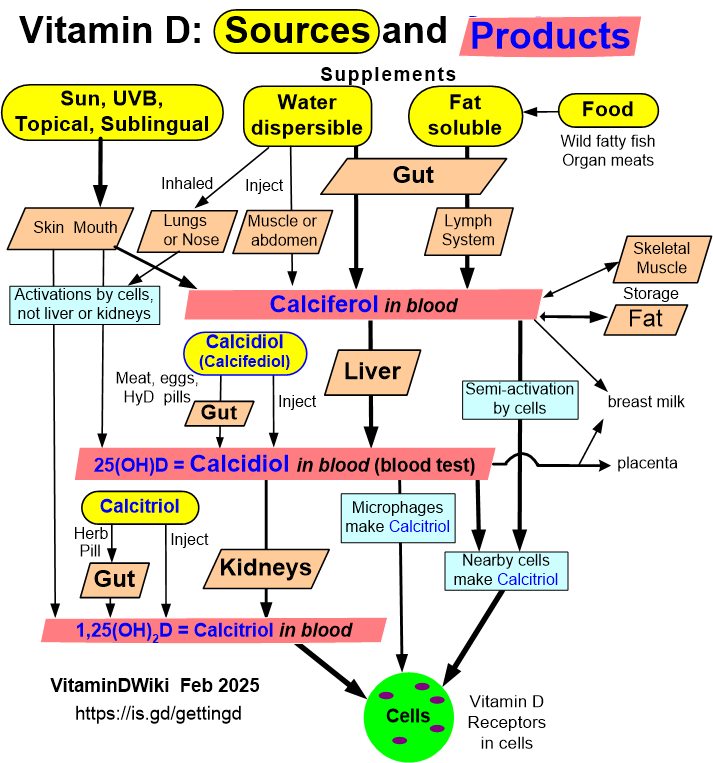Diabetic eye wounds healed by topical activated Vitamin D (calcitriol, mice)
Topical calcitriol application promotes diabetic corneal wound healing and reinnervation through inhibiting NLRP3 inflammasome activation
Exp Eye Res. 2021 Jun 15;108668. doi: 10.1016/j.exer.2021.108668
Yidi Wang 1, Luqin Wan 1, Zhenzhen Zhang 2, Jing Li 2, Mingli Qu 3, Qingjun Zhou 4

Vitamin D (VD) deficiency delays corneal wound healing in those with diabetes, which cannot be rescued with supplemental diet. Here, we employed topical calcitriol application to evaluate its efficiency in corneal wound healing and reinnervation in diabetic mice. Type 1 diabetic mice were topically administrated calcitriol , or subconjunctivally injected with NLRP3 antagonist MCC950 or IL-1β blocking antibody after epithelial debridement. Serum VD levels, corneal epithelial defect, corneal sensation and nerve density, NLRP3 inflammasome activation, neutrophil infiltration, macrophage phenotypes, and gene expressions were examined. Compared with those of normal mice, diabetic mice showed reduced serum VD levels. Topical calcitriol application promoted corneal wound healing and nerve regeneration, as well as sensation recovery in diabetic mice. Moreover, calcitriol ameliorated neutrophil infiltration and promoted the M1-to-M2 macrophage transition, accompanied by suppressed overactivation of the NLRP3 inflammasome. Treatment with NLRP3 antagonist or IL-1β blockage demonstrated similar improvements as those of topical calcitriol application. Additionally, calcitriol administration upregulated desmosomal and hemidesmosomal gene expression in the diabetic cornea. In conclusion, topical calcitriol application promotes corneal wound healing and reinnervation during diabetes, which may be related to the suppression of the overactivation of NLRP3 inflammasome.
